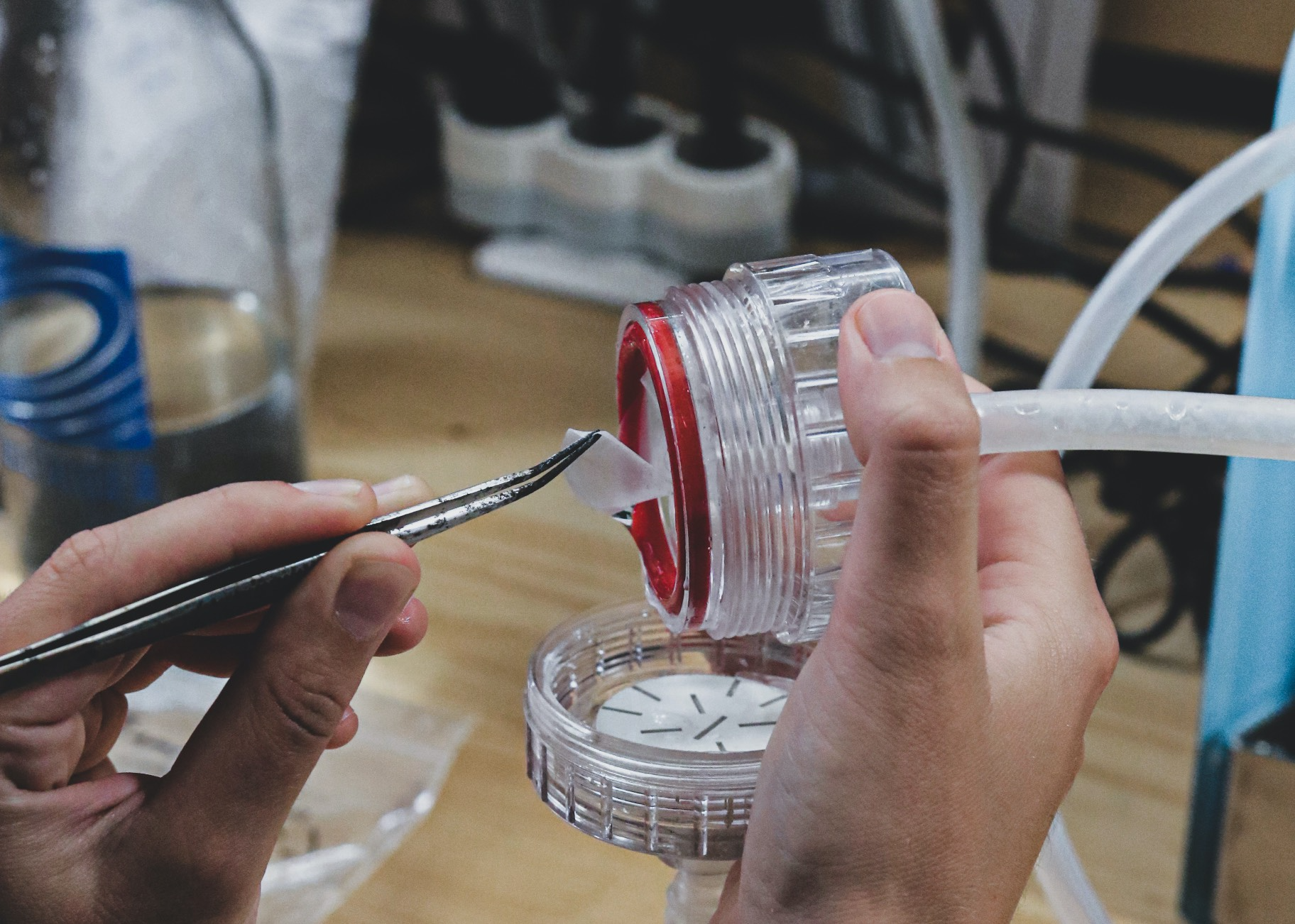A new harmful species has invaded the Basque littoral for the second year in a row, thus becoming well-known by local surfers and bather. Its name? The Ostreopsis algal. Surfrider Foundation Europe’s experts take stock on current studies and analyses.
An unexpected apparition this summer
Various cases of respiratory discomfort, burning sensation in the lungs and skin irritation have been reported since late July by many watersport users on the Basque coastline, whether after surfing and bathing sessions, or simply after staying on a towel on the beach. At the request of the region’s city halls, The French Research Institute for Exploitation of the Sea (IFREMER) has conducted analyses and collected samples in different bathing areas between Hendaye and Biarritz, in order to further investigate the phenomenon. The first results have shown that the algae Ostreopsis, potentially toxic, seem to be present on the Basque coastline. This is not a completely new phenomenon, as this species has been reported for the first time in Hendaye in late August 2020.
Various Ostreopsis species exist across the globe, each of them being more or less toxic for marine biodiversity and humans. While these algae are usually not found in European waters, the impacts of climate change, coupled with the increase of maritime transport could explain their unexpected spread on the Basque coastline since the end of summer 2020.
To learn more on Ostreopsis, read our last article and our educational booklet
How has the situation evolved one month later?
Studies and sampling campaigns have been conducted throughout this summer on a delimited area between Hendaye and Biarritz. Once available, the final outcomes of the analysis will enable scientists to identify which Ostreopsis species was found in the Basque region, its functioning, and for and foremost : its toxicity level. On August 20, the Nouvelle-Aquitaine Regional Health Agency (ARS) reported 395 confirmed cases of people impacted by the Ostreopsis algal. More testimonies are still being collected, and some new analyses will be conducted September, as highlighted by the Nouvelle-Aquitaine Regional Health Agency. People who had some symptoms are encouraged to share their experience, by completing a specific report form.
Surfrider Foundation Europe has launched an innovative work of participatory science
Surfrider Foundation Europe’s local chapters are working alongside the French public authorities to identify this newly discovered Ostreopsis species. First of all, the Mediterranean office and the Hérault chapter have been working since the beginning of the summer on an innovative project, in collaboration with the Microbia Environnement laboratory. With the aim of quantifying the amount of Ostreopsis found in the marine environment, water and algae samples have been collected on a regular basis in the municipality of Gruissan, and will soon be analyzed.
Subsequently, Surfrider Foundation Europe’s Basque chapter is involved in a participatory science project, linked to the recent appearance of Ostreopsis, in partnership with the Microbia Developpement laboratory. Equipped with scientific pre-analysis tools, the Basque Chapter volunteers were not afraid to jump into the water, in order to collect samples in five different areas between Saint-Jean-de-Luz and Biarritz. The samples will soon be sent to the laboratory, where they will be analyzed and interpreted. They will also support the creation of an innovative health monitoring tool – a biosensor which could detect the presence of Ostreopsis. Developing such a tool could enable experts to monitor coastal water quality in real time and to react quickly in case of risk, therefore limiting the number of individuals exposed to Ostreopsis.
What lessons can we draw from the recent bloom of Ostreopsis?
Surfrider Foundation Europe has been conducting in-depth work alongside scientists and public authorities (e.g. municipalities, the Regional Health Agency, urban agglomerations, IFREMER and Rivages Pro Tech). The objective is to understand how the Ostreopsis algal has invaded the Basque coastline, in order to avoid any sanitary risks for watersport users and bathers, as well as to prevent socio-economic risks related to the closing of bathing areas. “We don’t have any precedent on the apparition of this new species, nor on its functionning or its potential impacts”, explains Marc Valmassoni, one of the managers of Surfrider Foundation Europe’s expertise department. It is therefore crucial to further a coordinated, holistic approach with diverse stakeholders, in order to better assess this new threat.
For many years now, Surfrider Foundation Europe has been advocating for the inclusion of new parameters such as algae, within the European Bathing Water Directive, on the monitoring and management of bathing water. Indeed, it is vital to fully include the algae variable into this directive, so that they can be closely monitored on beaches, as recommended by the World Health Organization (WHO).
Committed since more than 30 years on water quality issues, Surfrider Foundation Europe works on field in polluted areas. Moreover, it is also an actor of innovation and expertise in the development of new solutions, as well as a mediator between public authorities, the surfing community, the tourism industry and the civil society.
Source pictures : camdam photography
If you would like to react to this article, please contact us at hello@surfrider.eu

